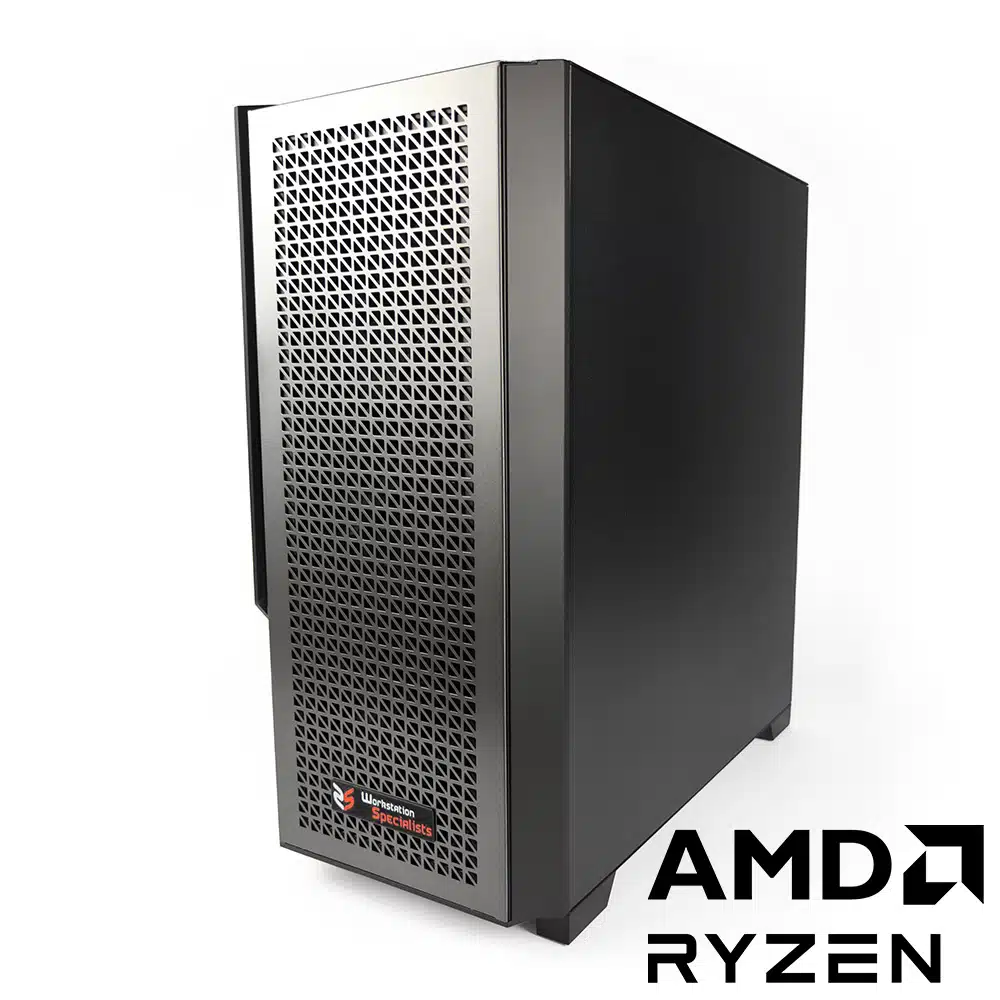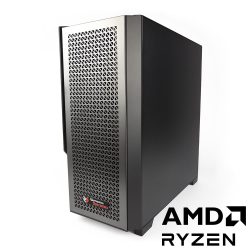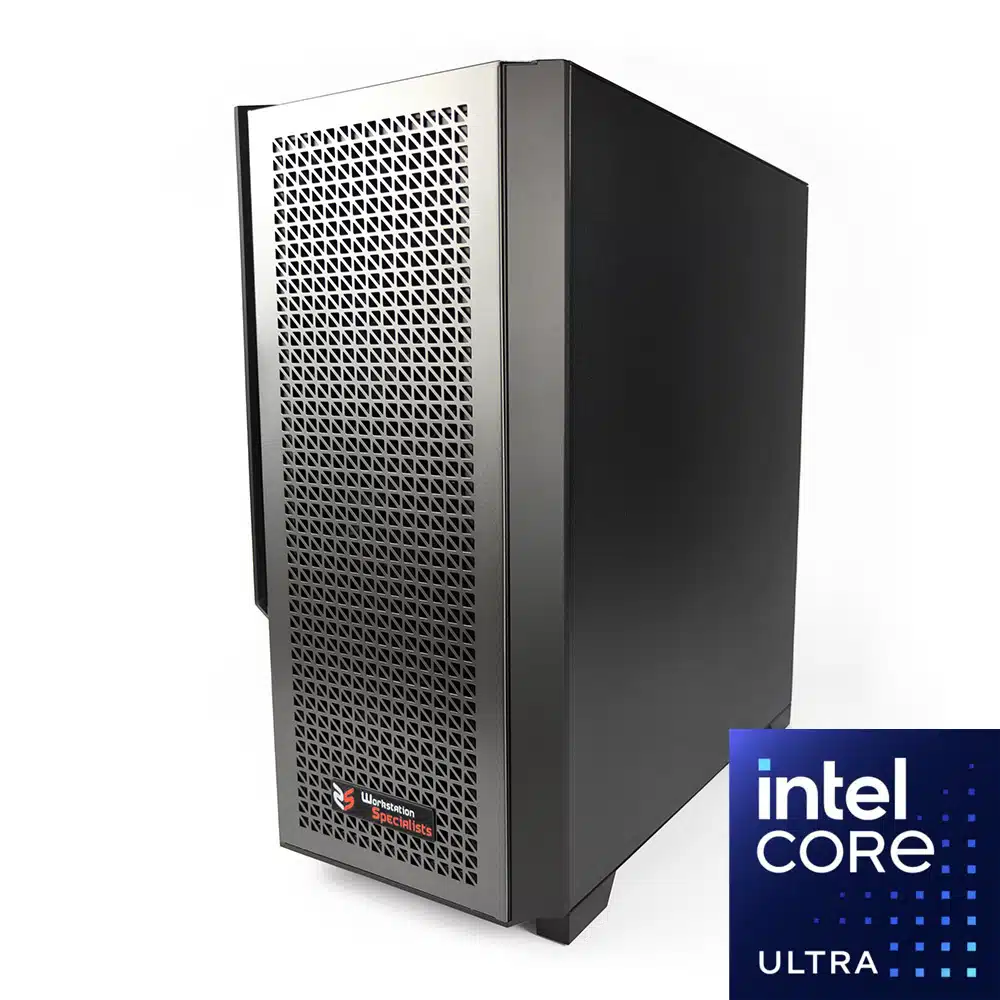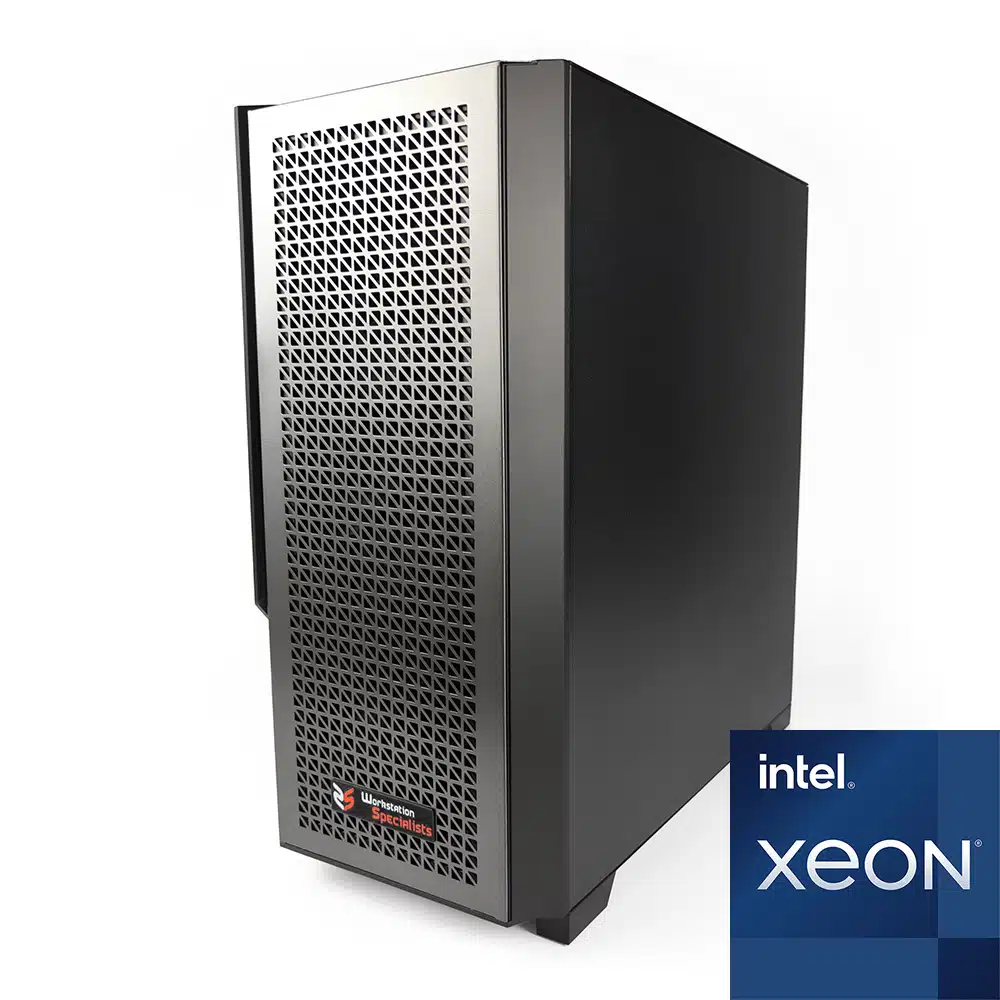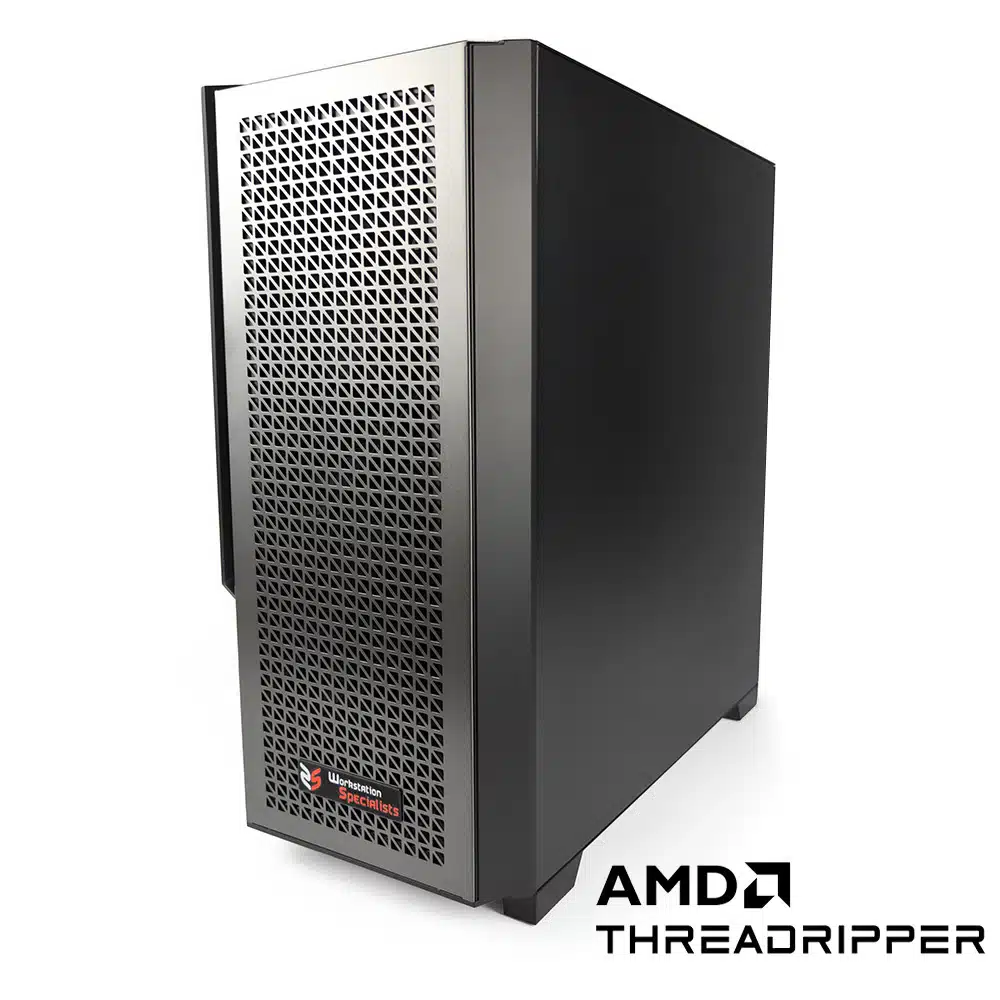When it comes to precision modelling, Rhino 3D is a favourite among architects, product designers, and engineers. From NURBS modelling to SubD workflows and complex mesh handling, Rhino is versatile – but your hardware setup can either enhance or limit your creative potential. A well-optimised workstation tailored for Rhino will ensure smooth performance, faster processing, and fewer bottlenecks.
This guide will walk you through the ideal hardware specifications for Rhino users in 2025, covering everything from the CPU and GPU to memory and storage. Whether you’re designing lightweight architectural forms or rendering complex assemblies, this guide can help you build the right tool – or let us build it for you.
Best CPU for Rhino 3D Modelling
Rhino is largely single-threaded when it comes to 3D modelling, so clock speed is king. Tasks like modelling and viewport interaction benefit from CPUs with high frequency and strong IPC (Instructions Per Clock), rather than high core counts.
Recommended CPUs for modelling-heavy workflows:
These processors reach close to 5GHz and offer excellent responsiveness for modelling tasks. They’re perfect for users who work mainly within Rhino without rendering or simulation.
For users who render with KeyShot or V-Ray:
Consider processors with more cores, such as AMD Ryzen Threadripper or Intel Xeon W. These balance strong modelling performance with the added benefit of reduced render times.
Entry-level users or those with lighter workloads can opt for CPUs like AMD Ryzen 7 or Intel Core Ultra 7, which still offer excellent single-core performance at a lower cost.
Multi-application workflows:
If Rhino is used alongside other software such as Grasshopper, Revit, or CAD applications, choose a CPU that balances frequency and core count to handle multitasking efficiently.
Best Graphics Card for Rhino Workstations
Rhino relies on the GPU to accelerate viewport performance, especially when working with large or complex 3D models. For basic 2D or light 3D tasks, a lower-tier GPU will suffice, but heavier models demand more graphics power.
Recommended GPUs:
For 2D or entry-level 3D work: NVIDIA RTX A2000 or GeForce RTX 4060
For more complex 3D models and real-time rendering: NVIDIA RTX PRO 4000 Blackwell or GeForce RTX 5080
For GPU rendering plugins (e.g. V-Ray GPU): Consider multiple high-end cards in AMD Ryzen Threadipper or Intel Xeon W workstations
Why choose professional GPUs?
NVIDIA RTX PRO GPUs offer certified drivers and extended support, giving you greater stability and compatibility in Rhino and across industry-standard software. While consumer GPUs may appear similar in performance, they often lack the long-term reliability and driver optimisation required in production environments.
System Memory (RAM)
Rhino lists 8GB as the minimum RAM requirement, but this is rarely sufficient in real-world workflows.
Recommended RAM:
32GB minimum for general Rhino use
64GB or more if working on large assemblies, rendering, or using other applications in parallel
Why it matters:
RAM isn’t just for Rhino – it’s also consumed by your operating system, background processes, and any other design or rendering software you’re running. If you frequently multitask or open multiple models at once, more memory will keep everything running smoothly.
Storage Drive Configuration
Fast storage improves boot times, load speeds, and file handling – crucial for a responsive workflow.
Suggested Setup:
Primary Drive: 1TB NVMe SSD (OS + Rhino)
Secondary Drive: 2TB+ NVMe SSD (project files, scratch disk)
Optional: HDD or NAS for archiving
SATA vs NVMe:
NVMe SSDs offer significantly faster performance than SATA SSDs or HDDs. For best results, always run your OS and active project files from an NVMe drive.
For long-term storage or multi-user environments:
Adding a traditional HDD or Network Attached Storage (NAS) solution can be useful. NAS setups offer RAID options and shared access, ideal for collaborative teams needing redundancy and simultaneous access to archived files.
Rhino Mobile Workstations
If you need to take your Rhino workflow on the go, mobile workstations now offer impressive performance in a portable form factor.
Workstation Specialists mobile solutions feature:
High-frequency Intel® Core™ processors
Professional NVIDIA RTX graphics
Up to 128GB of RAM
NVMe storage for rapid file handling
Perfect for AEC professionals, designers, or consultants who split time between site and studio, our mobile workstations give you desktop-class power wherever you work.
Frequently Asked Questions
Does Rhino benefit from multiple CPU cores?
Not during modelling. Rhino is largely single-threaded, so high clock speed is more important than core count. However, rendering and simulation tasks benefit from additional cores.
Is a gaming GPU good enough for Rhino?
While consumer GPUs (like GeForce) can run Rhino, they lack certified drivers and long-term stability. For professional use, we always recommend NVIDIA RTX professional GPUs.
Do I need ECC memory for Rhino?
ECC memory is not a requirement, but it can add stability in high-end workstations. If you’re running simulations, rendering, or large multi-app workflows, ECC RAM may help avoid data corruption.
How much VRAM do I need?
VRAM requirements vary by project complexity. For standard Rhino workflows, 6–8GB is usually enough. For large scenes or GPU rendering, 12GB or more is recommended.
Is NAS a good option for storing Rhino projects?
Yes. A NAS provides centralised, redundant storage with RAID protection. It’s especially beneficial for teams working on shared files or needing long-term backup solutions.
Get a Quote
Not sure what configuration you need? Let us help.
We’ll tailor a system based on your exact requirements, whether you’re focused on modelling, rendering, or a full multi-application workflow. Our systems are built in the UK and backed by expert support.
Call: +44 (0) 800 180 4081
Email: [email protected]
Request a quote: Request Online

